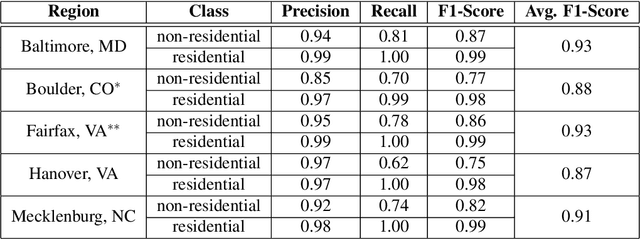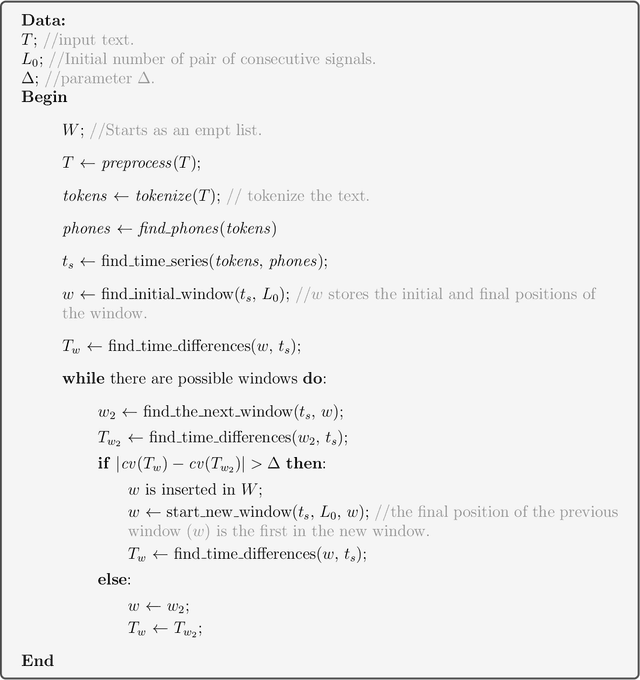Sandro M. Reia
Extracting the U.S. building types from OpenStreetMap data
Sep 09, 2024



Abstract:Building type information is crucial for population estimation, traffic planning, urban planning, and emergency response applications. Although essential, such data is often not readily available. To alleviate this problem, this work creates a comprehensive dataset by providing residential/non-residential building classification covering the entire United States. We propose and utilize an unsupervised machine learning method to classify building types based on building footprints and available OpenStreetMap information. The classification result is validated using authoritative ground truth data for select counties in the U.S. The validation shows a high precision for non-residential building classification and a high recall for residential buildings. We identified various approaches to improving the quality of the classification, such as removing sheds and garages from the dataset. Furthermore, analyzing the misclassifications revealed that they are mainly due to missing and scarce metadata in OSM. A major result of this work is the resulting dataset of classifying 67,705,475 buildings. We hope that this data is of value to the scientific community, including urban and transportation planners.
A pattern recognition approach for distinguishing between prose and poetry
Jul 18, 2021



Abstract:Poetry and prose are written artistic expressions that help us to appreciate the reality we live. Each of these styles has its own set of subjective properties, such as rhyme and rhythm, which are easily caught by a human reader's eye and ear. With the recent advances in artificial intelligence, the gap between humans and machines may have decreased, and today we observe algorithms mastering tasks that were once exclusively performed by humans. In this paper, we propose an automated method to distinguish between poetry and prose based solely on aural and rhythmic properties. In other to compare prose and poetry rhythms, we represent the rhymes and phones as temporal sequences and thus we propose a procedure for extracting rhythmic features from these sequences. The classification of the considered texts using the set of features extracted resulted in a best accuracy of 0.78, obtained with a neural network. Interestingly, by using an approach based on complex networks to visualize the similarities between the different texts considered, we found that the patterns of poetry vary much more than prose. Consequently, a much richer and complex set of rhythmic possibilities tends to be found in that modality.
The surprising little effectiveness of cooperative algorithms in parallel problem solving
Dec 06, 2019



Abstract:Biological and cultural inspired optimization algorithms are nowadays part of the basic toolkit of a great many research domains. By mimicking processes in nature and animal societies, these general-purpose search algorithms promise to deliver optimal or near-optimal solutions using hardly any information on the optimization problems they are set to tackle. Here we study the performances of a cultural-inspired algorithm -- the imitative learning search -- as well as of asexual and sexual variants of evolutionary algorithms in finding the global maxima of NK-fitness landscapes. The main performance measure is the total number of agent updates required by the algorithms to find those global maxima and the baseline performance, which establishes the worth of the cooperative algorithms, is set by the blind search in which the agents explore the problem space (binary strings) by flipping randomly chosen bits. We find that even for smooth landscapes that exhibit a single maximum, the evolutionary algorithms do not perform much better than the blind search due to the stochastic effects of the genetic roulette. The imitative learning is immune to this effect thanks to the deterministic choice of the fittest string in the population, which is used as a model for imitation. The tradeoff is that it is more prone to be trapped in local maxima than the evolutionary algorithms in the case of mildly rugged landscapes. In fact, in the case of rugged landscapes with a not too low density of local maxima, the blind search beats the cooperative algorithms regardless of whether the task is to find the global maximum or to find the fittest state within a given runtime.
 Add to Chrome
Add to Chrome Add to Firefox
Add to Firefox Add to Edge
Add to Edge